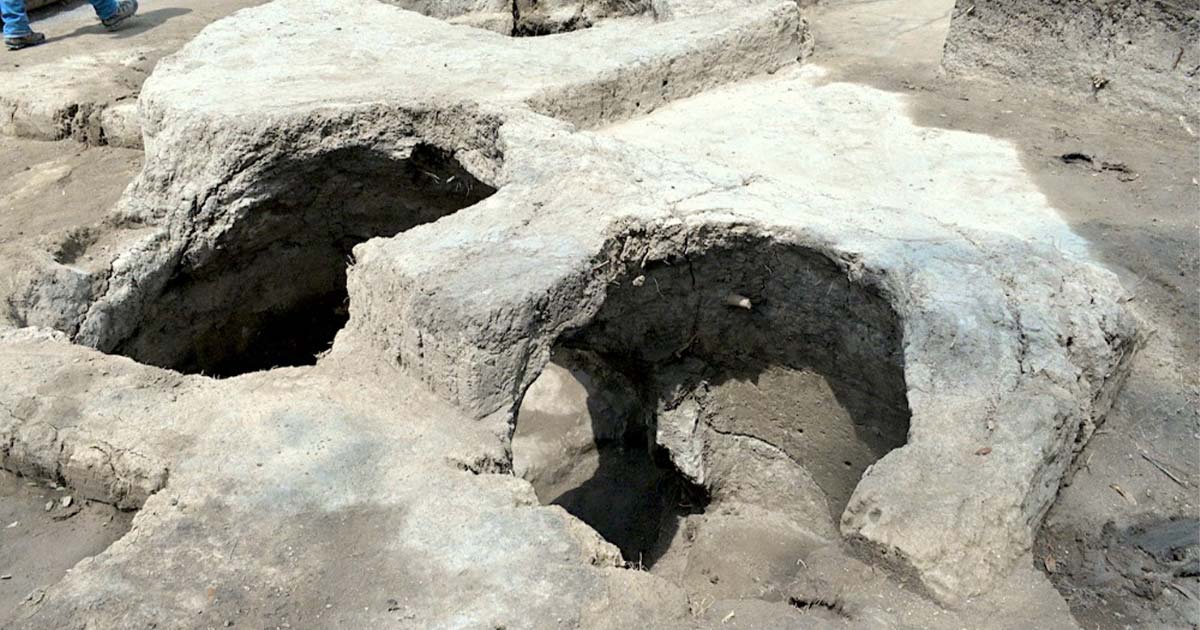Artifact Laden Pre-Hispanic, Pre-Volcanic Tombs Excavated in Mexico
Archaeologists in Mexico were digging at a high-altitude village from the Early and Middle Preclassic periods (2500-400 BC), when they found 12 unique cone-shaped, or conical tombs. Inside, they unearthed a range of rare burial artifacts and animal bones, laid alongside the remains of five juvenile adults.
Only meters away from Constituyentes Avenue, at the periphery of the third section of Chapultepec Forest, researchers from the National Institute of Anthropology and History (INAH) have discovered a collection of ancient pre-Hispanic burial sites. The ten “conical” tomb structures dated back to around 3,500 years, and half of them contained human remains.
The discovery was made in the Lomas de Chapultepec area to the west of present-day Mexico City, on the edge of the forest atop a promontory near Cri-Cri Park, at 2,416 meters [7927 feet] above sea level.
In an INAH press release, María de Lourdes López Camacho, the dig coordinator, said the large agricultural village existed towards the Early and Middle Preclassic periods (2500-400 BC).

Early and Middle Preclassic period (2500-400 BC), conical tombs at the newly found site in the Lomas de Chapultepec area to the west of present-day Mexico City. (Fabian González/INAH)
The Volcano That Changed Everything
Last year, researchers identified a concentration of archaeological materials in the vicinity of the Cri-Cri Park, Environmental Culture Center, and in June 2023, a specialist rescue team began digging near the Constituciónntes Avenue. Dr. López Camacho said “what’s fantastic” is that a community was living here “before the eruption of the Xitle volcano and the formation of the Pedregal de Coyoacán.”
The eruption of the Xitle volcano occurred around 1,700 years ago, and it instantly changed the landscape of what is today modern-day Mexico City, covering much of the region with a layer of volcanic lava. Therefore, the subsoil at the site was preserved for more than 3000 years, and now it’s revealing secrets about early occupation of the Chapultepec Forest, which is currently a vast urban city park spanning over 1,600 acres.
- Popocatepetl and Iztaccihuatl: A Tragic Romance of Aztec Legend
- Wrath of the Gods: Historic Eco-Armageddons

The coordinator of the excavations, María de Lourdes López Camach, shown here photographing the tombs, explains that the discovery reiterates the early occupation of the Chapultepec Forest. (INAH)
An Archaeological First For The West
Hunting for tombs, hundreds of test pits were excavated, covering an area of 200 square meters [2,152.8 square feet]. Dr. López Camacho said that by August 2023 “the site looked like “a clay Gruyere cheese.” But as a result of these test excavations, 12 funerary chambers measuring 2 meters [3.28 feet] long by 1.50 meters [4.92] feet in height, were revealed and subsequently explored.
The 12 “truncated conical tombs” are shaped like inverted cones, leading to their collective name: bottle, or bell tombs, and archaeologist López Camacho said these structures are “a very particular funerary architecture.” While similarly shaped tombs have been found on the Gulf Coast and in the south, north and east of the Cuenca of Mexico, this is the first time such structures have been found in the west.
Examining the Tomb Contents
Five of the tombs contained human bones from juvenile adults: four female and one male. And at a higher archaeological level the team found rectangular cists containing another three burials. Of note here, is that these burials were assembled in an “east-west axis” suggesting astronomical conditions were an important consideration in the funerary rites. The presence of these tombs suggests that the village “remained for a long time, beyond the Preclassic period,” according to INAH.

From both contexts, a collection of diverse materials has been recovered, some arranged as offerings. (María de Lourdes López Camacho/INAH)
Alongside the human remains the researchers found “four deer antlers” that were fashioned as functioning tools. They also found “sgraffito tecomates.” Sgraffito is a technique used in art and ceramics where layers of color or plaster are scratched away to reveal a contrasting layer beneath, and "Tecomate" typically refers to a type of traditional Mesoamerican container or vessel made from gourds.
The archaeologists also unearthed “a concave-convex cup, a good number of female figurines, the fragment of a slate disc (imported material, perhaps, from the Gulf coast), effigy vessels and figurines with schematic features, that archaeologists refer to as “ghosts”.” In conclusion, the evidence highlights the intricate nature of funerary practices encompassing agriculture, pottery production, and the construction of burial tombs, during the Preclassic period.
Top image: Conical tombs at the newly found site in the Lomas de Chapultepec area to the west of present-day Mexico City. Source: INAH
By Ashley Cowie

















